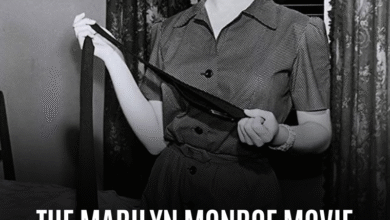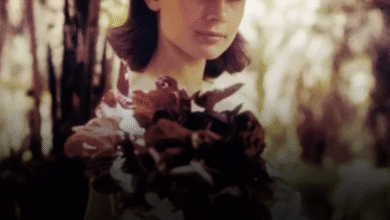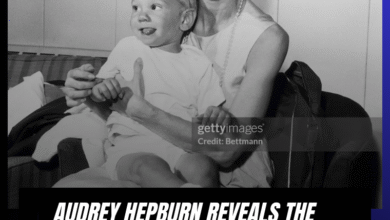Marilyn Monroe’s Voice in ‘River of No Return’: Why ‘One Silver Dollar’ Is a Musical Masterpiece
OPINION: This article may contain commentary which reflects the author's opinion.
In the 1954 Western musical River of No Return, Marilyn Monroe did more than just deliver a captivating performance on screen—she also showcased her vocal talent with the song “One Silver Dollar,” one of the film’s most memorable tracks. Monroe’s performance, alongside her acting, added a profound layer to the movie, weaving musical elements into the narrative and enriching its storytelling. As the film continues to resonate with audiences, “One Silver Dollar” stands out as a key example of Monroe’s versatility and enduring legacy in both film and music.
The Role of One Silver Dollar in River of No Return
Directed by Otto Preminger, River of No Return follows the story of Matt Calder (Robert Mitchum), a farmer recently released from prison, as he attempts to navigate a journey with his son, Mark (Tommy Rettig), down the treacherous Salmon River. Along the way, they encounter Monroe’s character, Kay, a dance hall singer, whose performances provide a musical backdrop to the film’s tense moments and complex emotions. Monroe’s singing becomes an integral part of the story, especially with “One Silver Dollar,” a song that reflects the themes of loss and transience central to the film.
The song, written by Ken Darby with music by Lionel Newman, underscores the characters’ struggles, with lyrics that echo the uncertainty and instability that shape the film’s narrative. The line, “One silver dollar, bright silver dollar, changing hands, changing hands,” resonates deeply with the idea of survival and change in the rugged wilderness, aligning perfectly with the journey of the film’s characters. Monroe’s vocal performance, while uncredited in some releases, delivers these themes with poignant simplicity, further enriching the emotional depth of the story.
Monroe’s Contribution to the Film’s Musical Legacy
Monroe’s contribution to River of No Return was significant not only in terms of her acting but also through her role as a musical anchor within the film. Along with “One Silver Dollar,” she performed several other songs, including “I’m Gonna File My Claim” and “Down in the Meadow,” each contributing to the film’s blend of traditional Western music and original compositions. The song’s inclusion in the film highlights Monroe’s ability to bring emotional resonance to her musical performances, making her an essential part of the film’s sonic landscape.
The soundtrack of River of No Return, which includes these performances by Monroe, was noted for its use of CinemaScope and Technicolor, bringing a vibrant musical dimension to the film. Critics have often pointed out how Monroe’s musical scenes elevated the film, creating a deeper connection between the viewer and the story’s themes. The juxtaposition of Monroe’s smooth, poignant vocals against the backdrop of the rugged Western frontier added an unexpected yet deeply effective layer to the narrative.
Availability and Enduring Popularity of One Silver Dollar
For contemporary audiences, “One Silver Dollar” remains accessible through various music platforms, ensuring its legacy endures long after the film’s release. The song can be found in albums such as Marilyn Monroe: 50th Anniversary Album (2012), which compiles some of Monroe’s greatest musical performances, including her work from River of No Return. Streaming platforms like Spotify and Deezer have made this track widely available, bringing Monroe’s voice to a new generation of listeners.
The song is also featured in remastered versions of the film’s soundtrack, which have been released over the years, further cementing its place in Monroe’s musical legacy. These versions offer fans the opportunity to experience Monroe’s performance in the context of the film, as well as access the lyrics and background details that enhance the listening experience. For those seeking a visual connection to the song, performances of “One Silver Dollar” are available on YouTube, where viewers can watch Monroe’s rendition in the film, accompanied by the film’s lush Cinematic visuals.
A Comparative Look: Monroe’s Musical Role in River of No Return
When comparing “One Silver Dollar” to other songs in the film, it becomes clear that Monroe’s performance is a centerpiece in maintaining a cohesive musical narrative. The soundtrack features multiple versions of the film’s title song “River of No Return,” which was performed by Robert Mitchum and Tennessee Ernie Ford, alongside Monroe’s own renditions. This shared musical theme ties the characters’ emotional journeys together, with Monroe’s vocals playing a central role in bridging the personal and emotional stakes of the narrative.
Other traditional Western songs in the film, like “Red River Valley,” stand in contrast to the original compositions sung by Monroe, but it is through her voice that the film’s musical coherence is achieved, creating a perfect balance between the old and the new.
Cultural and Historical Significance of Monroe’s Performance
Monroe’s portrayal of Kay in River of No Return and her musical contributions to the film cement her status not just as a screen legend but as a multifaceted artist. Her singing ability, often overshadowed by her iconic acting career, proved to be an essential part of her legacy. The film’s use of “One Silver Dollar” as a key narrative element in an already visually stunning movie showcases Monroe’s depth as a performer. This role and the music she contributed highlighted her versatility, making her one of Hollywood’s most enduring and beloved stars.
Monroe’s performance in River of No Return also contributes to her status as a cultural icon. In an era dominated by dramatic musical films, she was able to blend her sex appeal with a genuine musical talent, leaving behind a performance that has since been celebrated as a unique part of her career.
Conclusion: A Lasting Legacy
Marilyn Monroe’s performance of “One Silver Dollar” in River of No Return continues to be one of the standout moments in the film and a defining element of her musical legacy. The song’s themes of change, survival, and loss fit seamlessly into the narrative of the film, while Monroe’s voice added an emotional depth that transcended her on-screen persona. With modern platforms keeping her performance accessible, the song remains a lasting testament to Monroe’s multifaceted talent, solidifying her place as a Hollywood legend whose influence continues to be felt.



